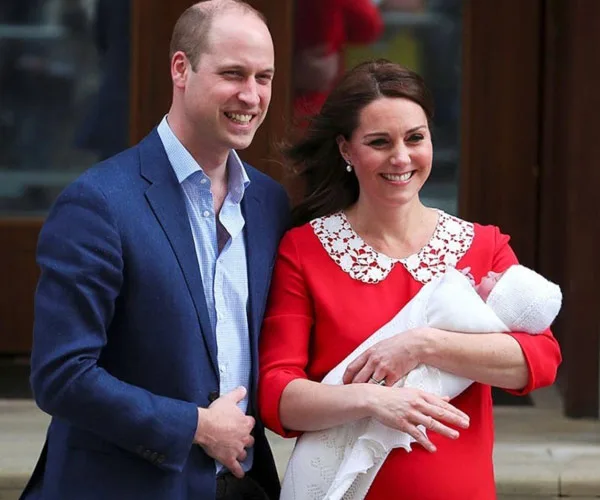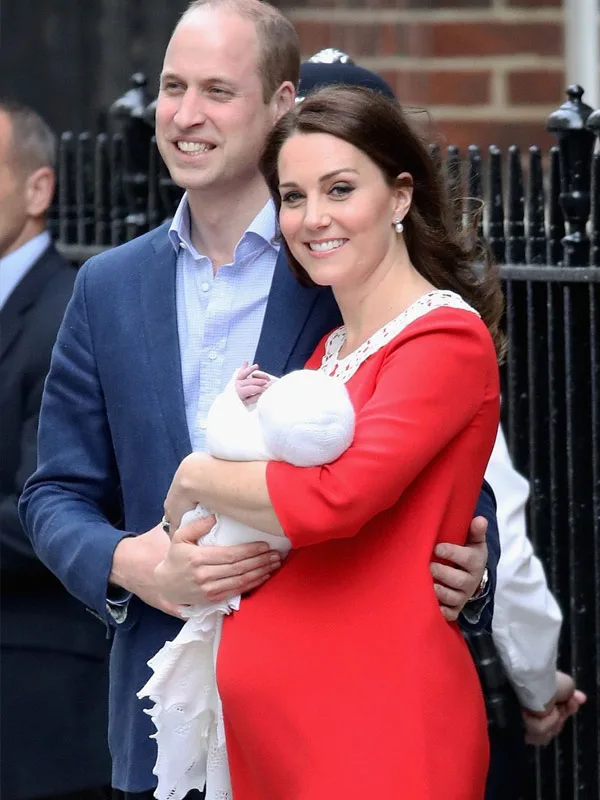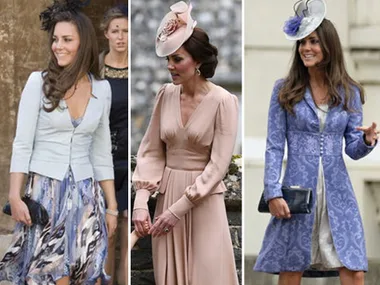Within hours of giving birth to her third child, Duchess Catherine stepped out from the Lindo Wing in London’s Paddington to reveal the fifth in line to the throne, Baby Boy Cambridge.
And while we were prepared to wait up ALL night (Australian time) to catch the first glimpse of the newborn Prince, there Catherine, 36, was – standing side-by-side with Prince William, baby boy in her arms, with fresh blow-dried locks and a thought-out frock that, to be quite honest, challenged our concept of time altogether.

Not only did Kate give birth to her royal bundle of joy, but she appears to have had time for a blow-dry, too. All within just hours of being admitted to hospital in the first place…

We blinked, and there she was!
So, what gives? Well, we quizzed Dr Philippa Costley, a spokesperson for the Royal Australian and New Zealand College of Obstetricians and Gynaecologists, to set the record straight.

Kate, glowing with her husband and her baby boy.
Do women have faster labours the third time around?
Women often have quicker labours, the more babies they have. A woman’s uterus contracts more efficiently in subsequent labours, however, why exactly this happens is unclear. It is rare for a woman’s subsequent labour to take longer than her first one.
Duchess Catherine was out of hospital just five hours after giving birth. Is this standard practice? Generally, how long do women stay in hospital after giving birth to their second or third children?
Some women leave hospital on the same day of their birth, whilst others stay for longer depending on their model of care. Generally women stay 1-2 nights after an uncomplicated vaginal delivery.
It would depend on the level of support the woman has at home, as well as her own preference with the exact timing of discharge.
Women who have other children at home are often wanting to go home as soon as possible.
Want more on the Royal Baby? Listen to the latest podcast of Woman’s Day Uncensored where the team dissect everything from Kate Middleton’s super-speedy delivery, to her tribute to Diana and of course, what the new prince might be named!
What kind of checks does a woman have to pass in order to be able to go home from hospital after giving birth?
It is generally recommended that women stay in hospital for a minimum of 4 hours to ensure that they are not bleeding heavily, and that there are no immediate complications from the birth. The baby is generally checked by a midwife or doctor to ensure that there are no notable abnormalities.
They also often have a hearing test performed. The baby requires a heel prick test to screen for a variety of abnormalities on day 3, however this can be performed at home by a midwife.
In your opinion, why was Duchess Catherine able to get out of the hospital so quickly?
It is likely that Catherine has plenty of support at home to assist with monitoring both her and her son in the first few days. This may include visits to the home from both medical and midwifery staff. It is also common for women who have had children before to leave more quickly.
This is because they are often have a better understanding of what is required in caring for a newborn, and have experience with breastfeeding if that is what they are doing. Women also often want to return home for their other children to minimise the disruption from the usual routine.
Check out our full Royal Baby coverage here:
– EVERY PHOTO: Prince George and Princess Charlotte meet the royal baby… Their little brother
– Royal baby: Duchess Kate greeting her public five hours after giving birth is beyond impressive
– FIRST PHOTOS: Prince William and Kate Middleton introduce the world to their new royal baby
– What will Prince William and Duchess Kate’s third baby be named?



